Revealed: Arsenal's secret AI dossier that gives them the edge - and how custom-built database will boost everything from injury prevention and transfers to creating new tactical insights for Mikel Arteta
In their relentless pursuit of a first Premier League title in two decades, Arsenal have quietly turned to a new frontier.
Behind the scenes at London Colney, the Gunners are building something that could redefine their future. It’s not a new formation or a tactical tweak. It’s an intelligence upheaval.
The club have expanded their data science department and poured investment into cutting-edge Artificial Intelligence ( AI ) infrastructure - the tools now shaping everything from identifying players who fit Mikel Arteta ’s tactical ideals to predicting injuries before they happen.
AI technology is football’s latest revolution among elite clubs. They are all scrambling to find competitive edges through data and machine learning, with the Gunners looking to position themselves among the pioneers.
The logic is simple. Over the course of a season, an extra goal here or preventing an injury there can be worth several points - and potentially, the final step towards silverware.
Daily Mail Sport offers a rare look into Arsenal’s hidden world of algorithms and data labs which are shaping their title pursuit...
Arsenal have expanded their data science department and poured investment into cutting-edge Artificial Intelligence (AI) infrastructure
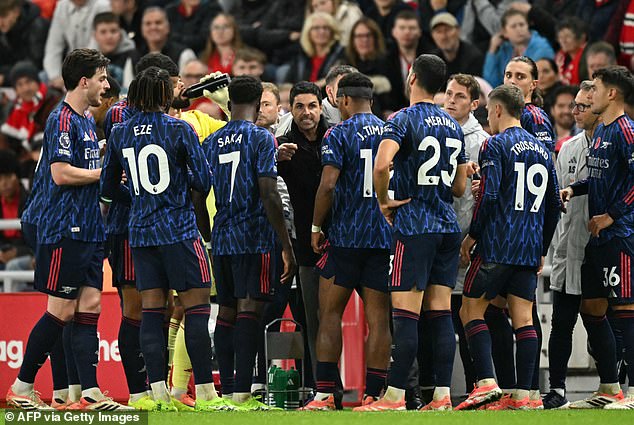
AI technology is football’s latest revolution among elite clubs. They are all scrambling to find a competitive edge
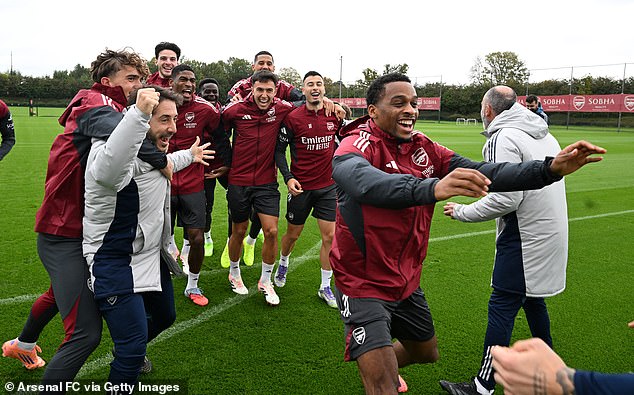
Just last week, Arteta hinted, ever so carefully, at the club’s quiet adoption of AI.
He said: ‘It’s in use already for many things and many processes that can help not just a team but an organisation as well.
‘It will improve and it will give us good insight, or things at least to think about. I’m not an expert but it’s a valuable tool.
‘We have developed certain things that in our opinion can help us to understand ourselves better and evaluate what we do and what we can improve.’
It was a glimpse into a world Arsenal would rather not shout about. One of the most significant developments at London Colney is what Arsenal refer to as their performance models - custom-built, AI-driven tools developed in-house.
Every day, the club collect vast quantities of data - such as GPS tracking from training, match statistics, recovery times, sprint records, biomechanical metrics and even micro-movements during drills.
Rather than relying on video clips or static post-match analysis, these AI systems ingest tens of thousands of data points across training and matches. Each data set feeds into models trained to answer specific questions that humans can’t - from identifying fatigue patterns to forecasting injury risk.
In essence, the technology allows Arsenal to prepare for what will happen, not simply react to what has happened - a subtle but seismic shift in football operations.
Every day, the club collect GPS tracking from training, match statistics, recovery times, sprint records, biomechanical metrics and even micro-movements during drills
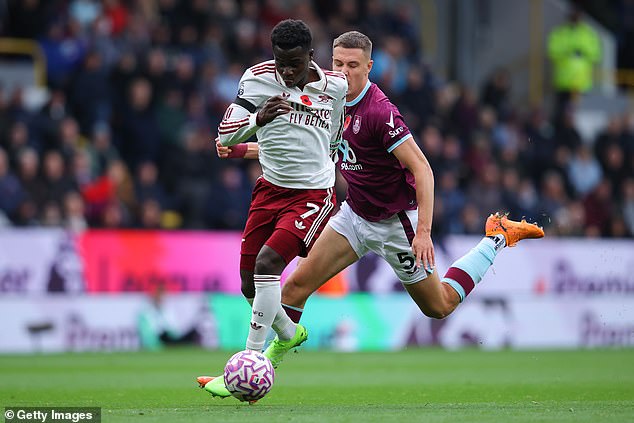
Machine learning, the branch of AI that powers many of these models, thrives in the invisible. It finds patterns hidden to the human eye. Instead of programming fixed rules such as ‘If a player runs fewer than X metres, they are fatigued’, the models are trained on years of performance data and left to find the correlations for themselves.
Though the club keeps their methods confidential, Daily Mail Sport understands that their AI monitoring focuses on multiple key fronts.
One is individual profiling. Each first-team and academy player has a living dossier charting sprint mechanics, recovery rates and how their biomechanics shift under fatigue.
This allows the Gunners to optimise training loads, as each player’s body responds differently, and identify strengths and weaknesses which can be targeted with tailored sessions.
Another - and the most crucial - is injury risk and recovery. It’s an area that has shaped Arsenal’s recent seasons.
In the 2022-23 campaign, William Saliba’s back injury derailed the Gunners’ title challenge, forcing a defensive reshuffle and exposing a lack of squad depth.
Then, last season, Mikel Merino was repurposed as a makeshift striker after a hamstring injury to Kai Havertz sidelined him for nearly three months, disrupting Arteta’s plans again.
Now, with six attacking options currently unavailable - Havertz, Viktor Gyokeres, Martin Odegaard, Gabriel Jesus, Gabriel Martinelli and Noni Madueke - the importance of proactive injury prevention could not be clearer.
Now, with six attacking options currently unavailable - including club captain Martin Odegaard (pictured) - the importance of proactive injury prevention could not be clearer
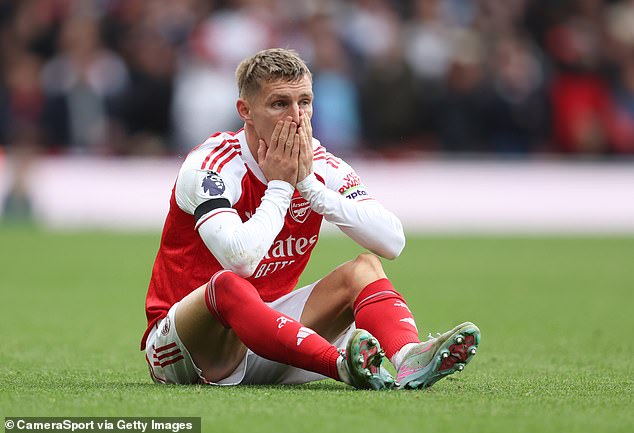
Arsenal’s models are built to anticipate risk rather than just respond to it. When the data whispers danger, the staff listen. By identifying early signs of muscular overload or fatigue - subtle drops in acceleration or mechanical imbalances that might precede a hamstring tear are potential clues - the models can flag players who may need adjusted workloads.
For example, before a busy run of games - such as the upcoming five matches in 14 days, starting with Tottenham on Sunday - the system might flag players carrying higher residual fatigue, prompting tailored rest or reduced minutes.
The focus is simple but vital: keep players available. Fewer injuries mean more consistency, and more consistency means more points.
Arsenal’s use of AI doesn’t stop with the physios and performance staff. In tactical preparation, machine learning tools dissect opposition patterns in microscopic detail. They can assess where gaps emerge when full backs push high, or how midfielders react to pressing triggers.
This allows analysts to present precise, data-informed insights such as: ‘When the opposition full back advances, a space opens between the centre back and defensive midfielder that our No10 can exploit.’
Recruitment has also evolved. The days of judging players on goals and assists alone are long gone. Arsenal’s models evaluate more nuanced traits invisible in raw statistics like adaptability between roles, and alignment with Arteta’s tactical principles.
Each position now comes with a physical and tactical blueprint, detailing the intensity profiles required. A wide forward, for instance, may be expected to sustain specific intensity levels within short bursts.
It means that the Gunners can identify undervalued players perfectly suited to their style - a crucial edge in an increasingly data-driven transfer market. They use this to manage a list of prospective player targets.
Their tech means that the Gunners can identify undervalued players perfectly suited to their style - a crucial edge in an increasingly data-driven transfer market
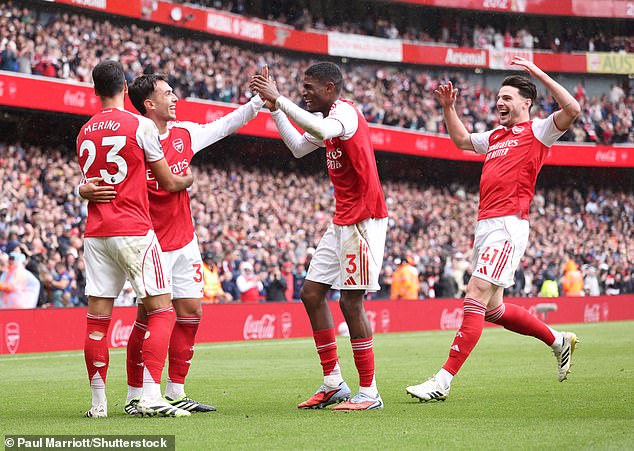
At the elite level, investing in AI and analytics is no longer optional. What sets Arsenal apart isn’t just their adoption of technology, but their integration of it
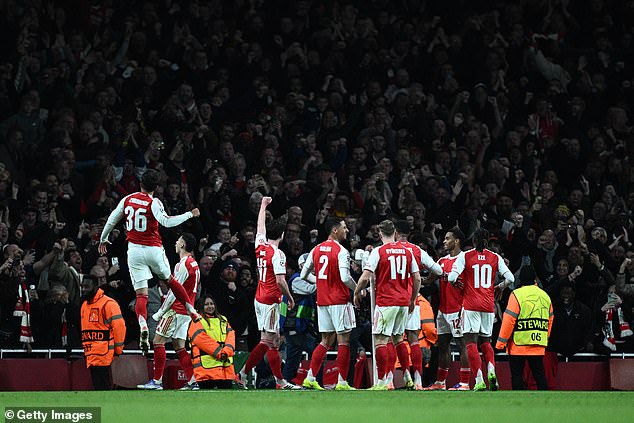
At the elite level, investing in AI and analytics is no longer optional. What sets Arsenal apart isn’t just their adoption of technology, but their integration of it.
AI is embedded across every layer of the club, from academy development to first-team recovery. In recent years, the club have ramped up their recruitment of data scientists and machine-learning engineers who now sit shoulder to shoulder with analysts and coaches, translating numbers into nuance.
But, still, AI is not a magic bullet. Models are only as good as the data that feeds them, and football remains gloriously unpredictable. Moments of individual brilliance or refereeing decisions can still defy the algorithms.
Even so, Arteta and his staff now have more tools than ever to support their instincts. The blend of data and intuition is where the Gunners believe the next leap will come.
For years, their evolution under Arteta has been visible on the pitch. But behind closed doors, Arsenal’s embrace of AI has been quietly taking shape in data rooms and digital dashboards. And that’s what makes it powerful.
Whether it delivers the title Arsenal have been chasing for just over 20 years remains to be seen. But one thing is clear: the foundation for a smarter, sharper Arsenal is already firmly in place - a future built not just on precision, but on prediction.